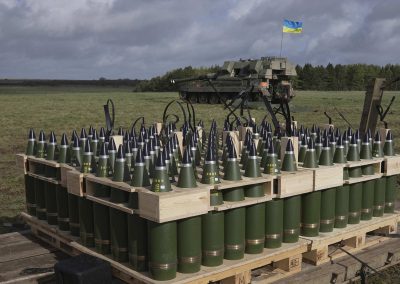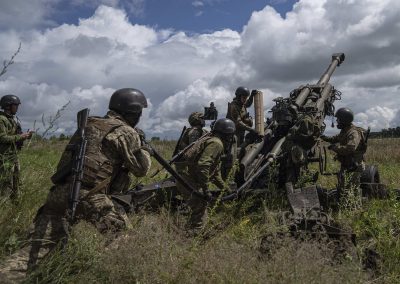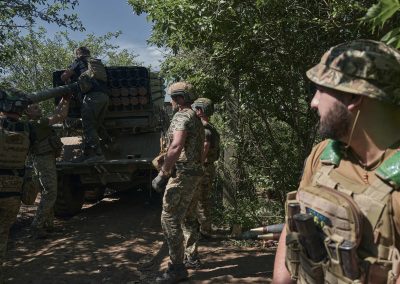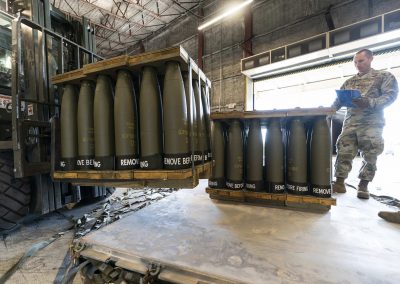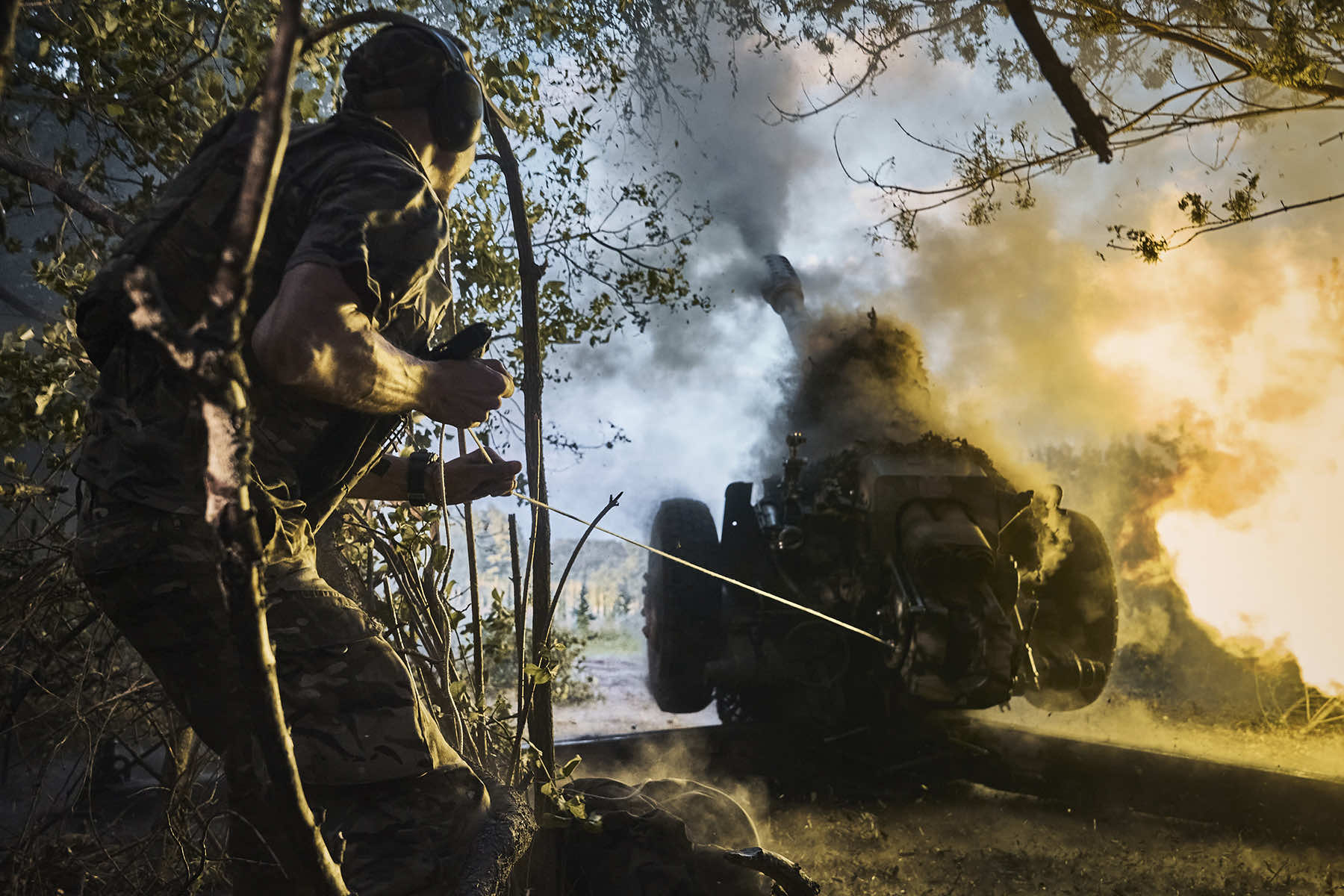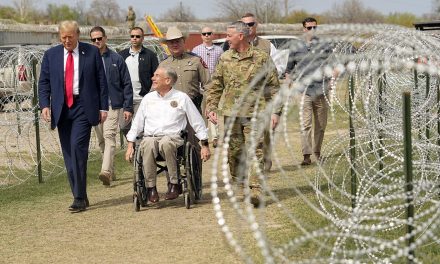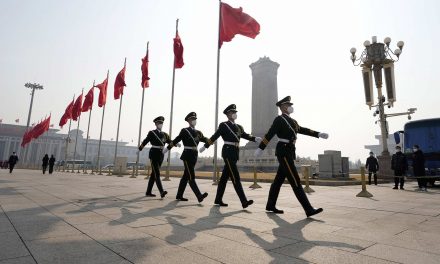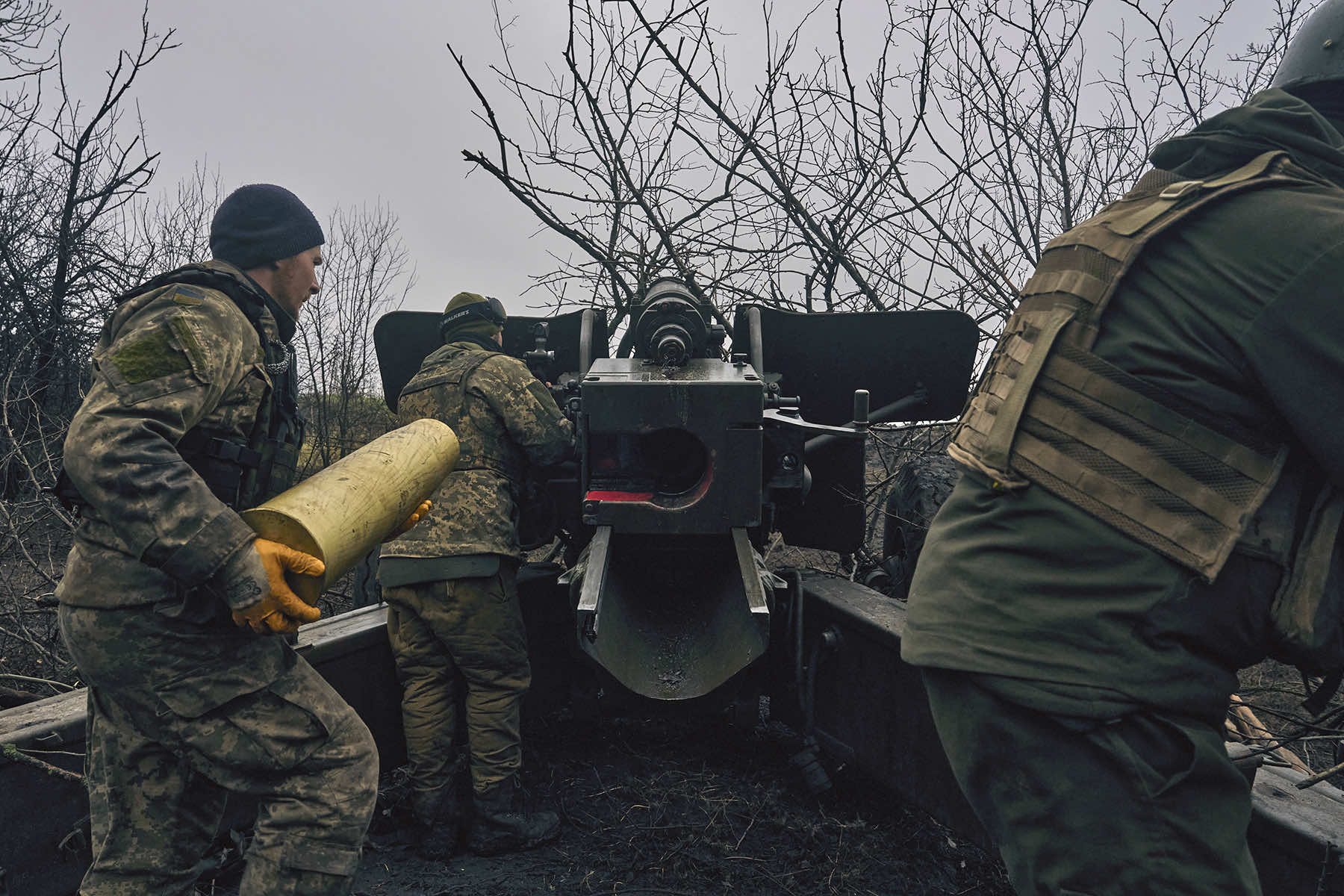
President Joe Biden recently defended what he said was a “difficult decision” to provide cluster munitions to Ukraine, a move the administration said was key to the fight and buttressed by Ukraine’s promise to use the controversial bombs carefully.
The decision comes on the eve of the NATO summit in Lithuania, where Biden is likely to face questions from allies on why the U.S. would send a weapon into Ukraine that more than two-thirds of alliance members have banned because it has a track record for causing many civilian casualties.
“It took me a while to be convinced to do it,” said Biden in a CNN interview. He added that he ultimately took the Defense Department’s recommendation to provide the munitions and discussed the matter with allies and with lawmakers on the Hill. He said “the Ukrainians are running out of ammunition” and the cluster bombs will provide a temporary fix to help stop Russian tanks.
The move was met with divided reactions from Congress, as some Democrats criticized the plan while some Republicans backed it. It was hailed on Twitter by Ukrainian President Volodymyr Zelenskyy, who thanked Biden for “a timely, broad and much-needed defense aid package” that will “bring Ukraine closer to victory over the enemy, and democracy to victory over dictatorship.”
The munitions are seen by the U.S. as a way to get Kyiv critically needed ammunition to help bolster its offensive and push through Russian front lines. U.S. leaders debated the thorny issue for months, before Biden made the final decision in early July.
U.S. national security adviser Jake Sullivan said the U.S. will send a version of the munition that has a reduced “dud rate,” meaning fewer of the smaller bomblets fail to explode. The unexploded rounds, which often litter battlefields and populated civilian areas, cause unintended deaths. U.S. officials have said Washington will provide thousands of the rounds, but provided no specific numbers.
“We recognize the cluster munitions create a risk of civilian harm from unexploded ordnance,” Sullivan told a White House briefing. “This is why we’ve deferred the decision for as long as we could. But there is also a massive risk of civilian harm if Russian troops and tanks roll over Ukrainian positions and take more Ukrainian territory and subjugate more Ukrainian civilians, because Ukraine does not have enough artillery. That is intolerable to us.”
Colin Kahl, the under secretary of defense for policy, said the U.S. will give Ukraine the most modern cluster munitions that have far lower dud rates. He said the bombs have been tested five times between 1998 and 2020, and the U.S. is confident the rate of unexploded duds is below 2.35 percent. While he declined to say how many the U.S. will send now, he said the U.S. has “hundreds of thousands” of cluster munitions available for Ukraine at the low dud rate.
He said the key reason to provide the bombs is to keep Ukraine in the fight.
“Things are going a little slower than some had hoped,” Kahl said in a Pentagon briefing. “So this is to make sure that the Ukrainians have the confidence that they have what they need. But frankly, also that the Russians know that the Ukrainians are going to stay in the game.”
Kahl said the Ukrainians have provided written assurances that they will not use the munitions in urban areas that are populated by civilians and that there will be a careful accounting of where they are employed.
Questioned at length about the decision, Sullivan said the U.S. consulted closely with allies before making the final decision, noting that even allies who have signed on to a ban of the bombs “have indicated, both privately and many of them publicly, that they understand our decision.”
Allies “recognize the difference between Russia using its cluster munitions to attack Ukraine and Ukraine using cluster munitions to defend itself its citizens and its sovereign territory,” he said. The U.S. “will not leave Ukraine defenseless at any point in this conflict, period.”
Still, U.S. reaction was mixed. Representative Betty McCollum, D-MN, called the decision “unnecessary and a terrible mistake.” And Representative Jim McGovern, D-MA, said the civilian risk lingers “often long after a conflict is over.” Meanwhile, Senator Tom Cotton, R-AK, backed the move, saying Ukraine needs access to weapons Russia already is using.
According to the International Committee of the Red Cross, some cluster munitions leave behind bomblets that have a high rate of failure to explode — up to 40% in some cases. With a claimed rate under 3% for the supply to Ukraine, U.S. officials said there would be fewer unexploded bombs left behind to harm civilians.
A convention banning the use of cluster bombs has been joined by more than 120 countries that agreed not to use, produce, transfer or stockpile the weapons and to clear them after they’ve been used. The United States, Russia and Ukraine are among those who have not signed on.
The cluster munitions are included in a new $800 million package of military aid the U.S. will send to Ukraine. The new package, drawn from Pentagon stocks, will also include Bradley and Stryker armored vehicles and an array of ammunition, such as rounds for howitzers and the High Mobility Artillery Rocket System, officials said.
Providing the cluster bombs will also ease the pressure on limited U.S. ammunition stockpiles. The U.S. has been taking massive amounts of 155 mm rounds from Pentagon stocks and sending them to Ukraine, creating concerns about eating into American stores. The cluster munitions, which are fired by the same artillery as the conventional 155 mm, will give Ukraine a highly lethal capability and also allow them to strike more Russian targets using fewer rounds.
Kahl said the cluster bombs are not a permanent solution, but more of “a bridge” as the U.S. and allies work to increase the production of the 155 mm rounds.
So far the reactions from allies have been muted. NATO Secretary-General Jens Stoltenberg stressed that the military alliance takes no position on cluster munitions and it is a decision that allies will make. And Germany, which has signed the ban treaty, said it won’t provide the bombs to Ukraine, but expressed understanding for the American position.
“We’re certain that our U.S. friends didn’t take the decision about supplying such ammunition lightly,” German government spokesman Steffen Hebestreit told reporters in Berlin. “We need to remember once again that Russia has already used cluster ammunition at a large scale in its illegal war of aggression against Ukraine.”
Oleksandra Ustinova, a member of Ukraine’s parliament who has been advocating that Washington send more weapons, noted that Ukrainian forces have had to disable mines from much of the territory they are winning back from Russia. As part of that process, Ukrainians will also be able to catch any unexploded ordnance from cluster munitions.
The last large-scale American use of cluster bombs was during the 2003 invasion of Iraq, according to the Pentagon. But U.S. forces considered them a key weapon during the invasion of Afghanistan in 2001, according to Human Rights Watch. In the first three years of that conflict, it is estimated the U.S.-led coalition dropped more than 1,500 cluster bombs in Afghanistan.
WHAT IS A CLUSTER MUNITION?
A cluster munition is a bomb that opens in the air and releases smaller “bomblets” across a wide area. The bomblets are designed to take out tanks and equipment, as well as troops, hitting multiple targets at the same time.
The munitions are launched by the same artillery weapons that the U.S. and allies have already provided to Ukraine for the war — such as howitzers — and the type of cluster munition that the U.S. is planning to send is based on a common 155 mm shell that is already widely in use across the battlefield.
In previous conflicts, cluster munitions have had a high dud rate, which meant that thousands of the smaller unexploded bomblets remained behind and killed and maimed people decades later. The U.S. last used its cluster munitions in battle in Iraq in 2003, and decided not to continue using them as the conflict shifted to more urban environments with more dense civilian populations.
Brigadier General Pat Ryder said the Defense Department has “multiple variants” of the munitions and “the ones that we are considering providing would not include older variants with unexploding rates that are higher than 2.35%.”
IS USING THEM A WAR CRIME?
Use of cluster bombs itself does not violate international law, but using them against civilians can be a violation. As in any strike, determining a war crime requires looking at whether the target was legitimate and if precautions were taken to avoid civilian casualties.
“The part of international law where this starts playing (a role), though, is indiscriminate attacks targeting civilians,” Human Rights Watch’s associate arms director Mark Hiznay told The Associated Press. “So that’s not necessarily related to the weapons, but the way the weapons are used.”
A convention banning the use of cluster bombs has been joined by more than 120 countries, which agreed not to use, produce, transfer or stockpile the weapons and to clear them after they’ve been used. The U.S., Russia and Ukraine haven’t signed on.
WHERE HAVE THEY BEEN USED?
The bombs have been deployed in many recent conflicts, including by U.S. forces. The U.S. initially considered cluster bombs an integral part of its arsenal during the invasion of Afghanistan that began in 2001, according to HRW. The group estimated that the U.S.-led coalition dropped more than 1,500 cluster bombs in Afghanistan during the first three years of the conflict.
The Defense Department had been due by 2019 to stop use of any cluster munitions with a rate of unexploded ordnance greater than 1%. But the Trump administration rolled back that policy, allowing commanders to approve use of such munitions.
Syrian government troops often used cluster munitions — supplied by Russia — against opposition strongholds during that country’s civil war, frequently hitting civilian targets and infrastructure. And Israel used them in civilian areas in south Lebanon, including during the 1982 invasion.
During the monthlong 2006 war with Hezbollah, HRW and the United Nations accused Israel of firing as many as 4 million cluster munitions into Lebanon. That left unexploded ordnance that threatens Lebanese civilians to this day.
The Saudi-led coalition in Yemen has been criticized for its use of cluster bombs in the war with the Iran-backed Houthi rebels that has ravaged the southern Arabian country.
In 2017, Yemen was the second deadliest country for cluster munitions after Syria, according to the U.N. Children have been killed or maimed long after the munitions originally fell, making it difficult to know the true toll.
In the 1980s, the Russians made heavy use of cluster bombs during their 10-year invasion of Afghanistan. As a result of decades of war, the Afghan countryside remains one of the most heavily mined countries in the world.
WHAT IS HAPPENING IN UKRAINE?
Russian forces have used cluster bombs in Ukraine on a number of occasions, according to Ukrainian government leaders, observers and humanitarian groups. And human rights groups have said Ukraine has also used them.
During the early days of the war, there were repeated instances of Russian cluster bombs cited by groups such as Human Rights Watch, including when they hit near a preschool in the northeastern city of Okhtyrka. The open-source intelligence group Bellingcat said its researchers found cluster munitions in that strike as well as multiple cluster attacks in Kharkiv, Ukraine’s second-largest city, also in the northeast.
More recently, in March, a Russian missile and drone barrage hit a number of urban areas, including a sustained bombardment in Bakhmut, in the eastern Donetsk region. Just west of there, shelling and missile strikes hit the Ukrainian-held city of Kostiantynivka and AP journalists in the city saw at least four injured people taken to a local hospital. Police said Russian forces attacked the town with S-300 missiles and cluster munitions.
Just a month later, Donetsk Governor Pavlo Kyrylenko accused Russian forces of attacking a town with cluster munitions, wounding one person. An Associated Press and PBS Frontline database called War Crimes Watch Ukraine has cataloged how Russia has used cluster bombs.

